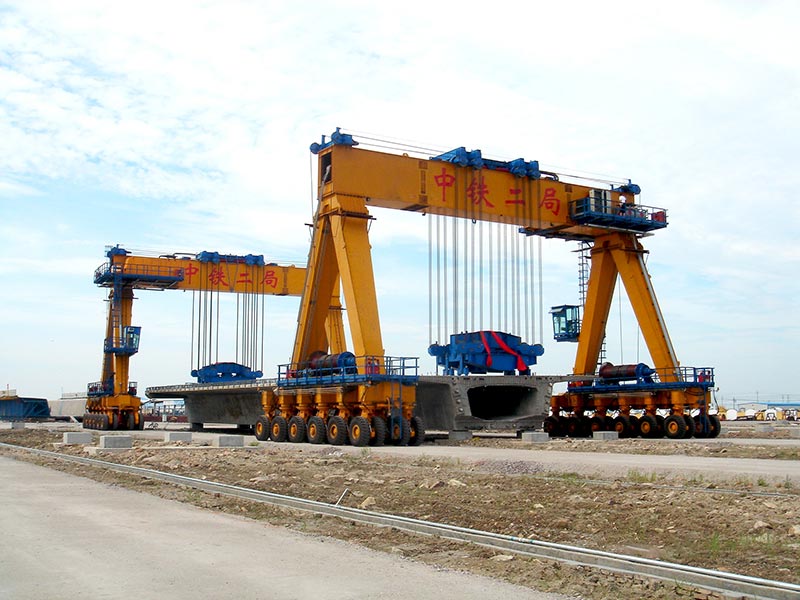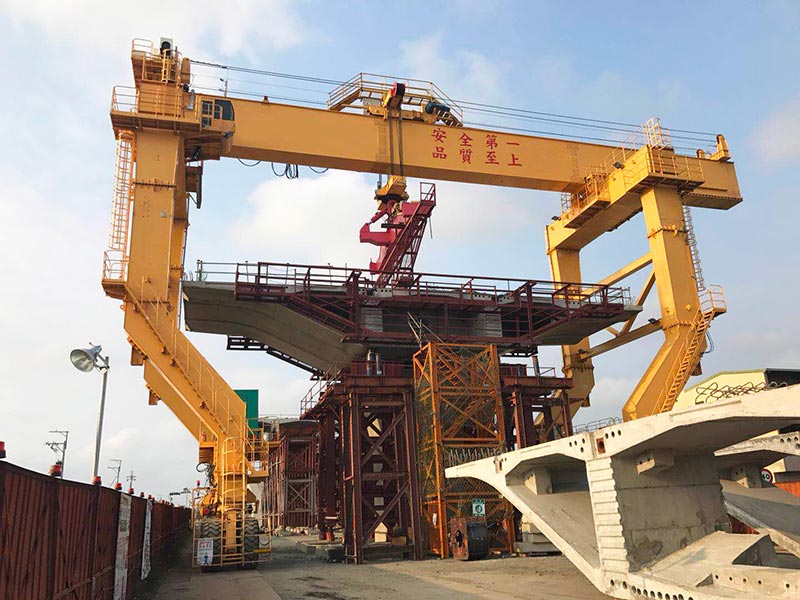Straddle carrier cranes are essential equipment in the construction of precast segmental bridges, playing a crucial role in their efficient and precise installation. These cranes are designed to handle and transport heavy and bulky precast segments, which are fundamental components of segmental bridges. This article explores the role of straddle carrier cranes in the context of precast segmental bridges, highlighting their benefits, operational mechanisms, and impact on construction projects.

Understanding Straddle Carrier Cranes
Straddle carrier cranes are versatile heavy-duty lifting machines used to transport and position large and heavy loads. They are equipped with four legs that straddle the load, providing stability and allowing the crane to lift, transport, and place heavy precast segments with precision. The key features of straddle carriers for sale include their high lifting capacities, wide span, and advanced control systems, making them ideal for handling precast bridge segments.
Segmental Bridges and Their Construction
Segmental bridges are constructed using precast concrete segments that are assembled on-site. This construction method involves the following key steps:
- Precasting: Concrete segments are cast in a controlled factory environment, allowing for high-quality production and curing.
- Transport: The precast segments are transported from the factory to the construction site.
- Erection: Segments are lifted into position and assembled to form the bridge structure.
The use of precast segments accelerates the bridge construction process, reduces on-site labor, and enhances the quality of the bridge. Straddle carrier cranes play a vital role in this process by facilitating the transportation and erection of these heavy segments.
Benefits of Using Straddle Carrier Cranes for Precast Segmental Bridges
- High Lifting Capacity: Straddle carrier cranes are designed to handle substantial loads, making them suitable for lifting and positioning large precast segments. Their lifting capacity ensures that even the heaviest segments can be managed safely and efficiently.
- Precision Placement: These cranes offer precise control over the placement of precast segments. Advanced control systems and hydraulics allow for accurate positioning, which is crucial for the correct alignment and assembly of bridge components.
- Enhanced Stability: The straddle carrier’s design, with its four legs, provides excellent stability during lifting and transportation. This stability minimizes the risk of accidents and ensures that the segments are handled safely.
- Reduced Construction Time: By efficiently handling and transporting precast segments, straddle carrier cranes significantly speed up the construction process. This reduction in time leads to cost savings and faster bridge construction project completion.
- Flexibility: Straddle carriers can operate in various site conditions and configurations. Their adaptability makes them suitable for different bridge designs and construction environments.

Operational Mechanisms
Straddle carrier cranes operate through a combination of mechanical and hydraulic systems:
- Lifting Mechanism: The crane’s lifting system typically includes hydraulic cylinders that raise and lower the load. These cylinders provide the necessary force to lift heavy precast segments.
- Transport Mechanism: The crane is equipped with wheels or tracks that allow it to move across the site. This mobility is essential for positioning segments at different locations along the bridge alignment.
- Control Systems: Modern straddle carriers are equipped with advanced control systems that enable operators to maneuver the crane with precision. These systems often include computerized controls for managing lifting and placement operations.
- Safety Features: Safety is a critical consideration in the operation of straddle carrier cranes. Features such as load sensors, emergency stop systems, and stability monitoring contribute to the safe handling of precast segments.
Impact on Construction Projects
The use of straddle carrier cranes in precast segmental bridge construction has several positive impacts on projects:
- Improved Efficiency: The efficiency of Aicrane straddle carrier cranes streamlines the construction process, reducing the time required for segment transportation and placement. This efficiency is particularly valuable in large-scale bridge projects.
- Enhanced Quality: By ensuring precise placement and alignment of precast segments, straddle carrier cranes contribute to the overall quality of the bridge. Proper alignment reduces the need for rework and enhances the durability of the structure.
- Cost Savings: The reduction in construction time and labor requirements leads to significant cost savings. Additionally, the efficient handling of segments minimizes the risk of damage and associated costs.
- Safety: The stability and precision of straddle carrier cranes improve safety on the construction site. Reduced manual handling and the ability to place segments accurately lower the risk of accidents and injuries.
Challenges and Considerations
While straddle carrier cranes offer numerous benefits, there are also challenges and considerations associated with their use:
- Site Conditions: The effectiveness of straddle carrier cranes can be affected by site conditions such as uneven terrain or limited space. Proper site preparation is essential to ensure optimal crane performance.
- Maintenance: Regular maintenance is required to keep straddle carrier cranes in good working condition. This includes inspections, lubrication, and repairs to prevent breakdowns and ensure reliable operation.
- Operator Training: Skilled operators are essential for the safe and efficient operation of straddle carrier cranes. Proper training and certification are necessary to ensure that operators can handle the equipment effectively.
Conclusion
Straddle carrier cranes play a pivotal role in the construction of precast segmental bridges. Their high lifting capacities, precision placement capabilities, and stability make them indispensable tools in modern bridge construction. By enhancing efficiency, quality, and safety, straddle carrier cranes contribute significantly to the successful completion of bridge projects. As construction techniques continue to evolve, the role of these mobile gantry cranes remains vital in shaping the infrastructure of tomorrow.